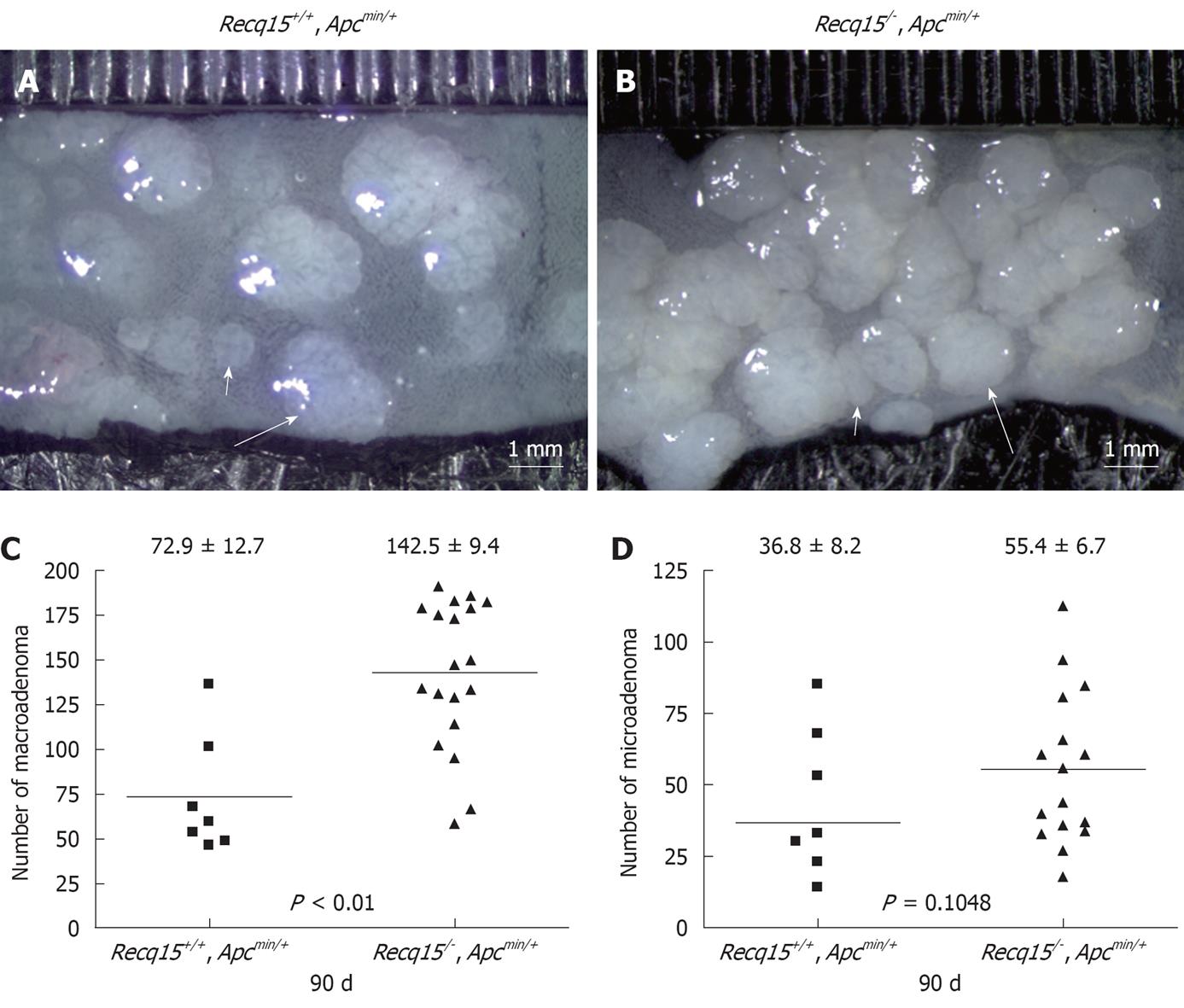Copyright
©2010 Baishideng.
World J Gastroenterol. Mar 28, 2010; 16(12): 1482-1486
Published online Mar 28, 2010. doi: 10.3748/wjg.v16.i12.1482
Published online Mar 28, 2010. doi: 10.3748/wjg.v16.i12.1482
Figure 1 Effects of Recql5 deficiency in the development of intestinal adenomas in the ApcMin/+ mice.
Recql5+/+ApcMin/+ and Recql5-/-ApcMin/+ mice were monitored and sacrificed at 90 d of age. A, B: Representative microscopic images of sections from the ileum of a Recql5+/+ApcMin/+ (A) and a Recql5-/-ApcMin/+ (B) mouse. A microadenoma (diameter < 1 mm, short arrows) and a macroadenoma (diameter ≥ 1 mm, long arrows) are indicated in (A, B); C, D: Multiplicity of macroadenomas (C) and microadenomas (D) in the intestine of individual mice at 90 d of age. Mean and SE are also shown at the top of each column. Each data point represents the total number of macroadenomas (C) or microadenomas (D) in a single mouse.
-
Citation: Hu Y, Lu X, Luo G. Effect of Recql5 deficiency on the intestinal tumor susceptibility of
Apcmin mice. World J Gastroenterol 2010; 16(12): 1482-1486 - URL: https://www.wjgnet.com/1007-9327/full/v16/i12/1482.htm
- DOI: https://dx.doi.org/10.3748/wjg.v16.i12.1482









